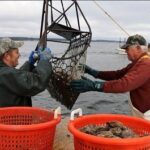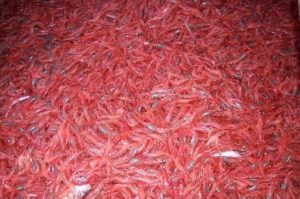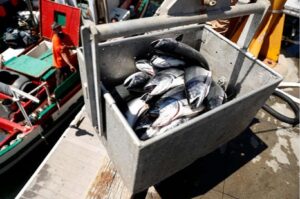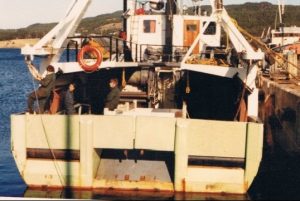President Biden’s plan to save the oceans
 The following two bullet points were from a Whitehouse Press Release today (entire release at https://tinyurl.com/muamvsu9):
The following two bullet points were from a Whitehouse Press Release today (entire release at https://tinyurl.com/muamvsu9):
- The National Oceanic and Atmospheric Administration (NOAA) is initiating the designation process for a new national marine sanctuary to conserve Hudson Canyon, America’s deepest canyon in the Atlantic Ocean. Hudson Canyon, which is located approximately 100 miles off the coast of New York and New Jersey and reaches depths of 2-2.5 miles, is an ecological hotspot, providing habitat for endangered, protected, and sensitive species including sperm whale, sea turtles, and unique and diverse seep communities. The canyon boasts deep sea, cold-water coral communities, and contains various shipwrecks, including freighters and United States military radar platforms, dating back to the mid-19th Century. In proposing to conserve the area as a national marine sanctuary, NOAA will seek public comment on the potential boundaries for the sanctuary and other factors related to its future management.
- U.S. Further Strengthens its Ocean Leadership through International Clean Seas Campaign. On June 3, the United States became the newest member in the UN Environment Program’s Clean Seas Campaign. Launched in 2017, the Clean Seas Campaign serves as a voluntary, multi-stakeholder platform for individuals, civil society groups, industry and governments to promote policies, standards, and practices to reduce marine litter. The United States joins 64 countries, covering more than 60 percent of the world’s coastlines. Earlier this year, the United States also joined more than 90 other countries in signing on to the High Ambition Coalition for Nature and People and its goal to conserve or protect at least 30 percent of the global ocean by 2030. And since we cannot reach that global target without equally ambitious action within national waters, the United States announced the Ocean Conservation Pledge, by which countries commit to take voluntary actions to conserve, protect, and restore at least 30% of waters under their national jurisdiction. The pledge is non-binding, but aims to catalyze political action to significantly enhance ocean conservation efforts.
There were a number of other announced actions (or let’s hope they are only intentions, though perhaps somewhat-or severely- misguided), but for obvious reasons I found the above two most immediately alarming. For one thing, arbitrarily declaring large areas of oceans “protected” isn’t anything approaching rational planning, particularly when those large areas are heavily utilized by various users who have all depended on historical access to those waters. This, coupled with the intention to “protect” 30% of territorial waters as well as the fact that huge hunks of our EEZs are going to be off limits to profitable seafood harvesting, is painting a pretty grim picture of the future of fishing in the U.S. – at least in our “backyard” (and keep in mind that 2030 is only 7 ½ years away).
It will be interesting to see what concessions to the above will be granted to offshore wind developers.
Nils E. Stolpe













































Leave a Reply